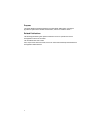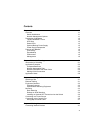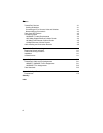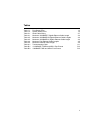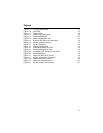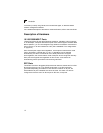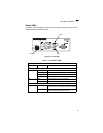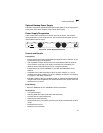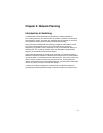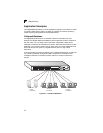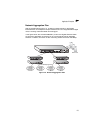
Introduction
1-2
1
connection (in-band) using Telnet, the on-board Web agent, or Windows-based
network management software.
For a detailed description of the switch’s advanced features, refer to the User Guide.
Description of Hardware
10/100/1000BASE-T Ports
These ports are RJ-45 ports that operate at 10 Mbps or 100 Mbps, half or full duplex,
or at 1000 Mbps, full duplex. Because all ports on this switch support automatic MDI/
MDI-X operation, you can use straight-through cables for all network connections to
PCs or servers, or to other switches or hubs. (See “1000BASE-T Pin Assignments”
on page B-2.)
Each of these ports support auto-negotiation, so the optimum transmission mode
(half or full duplex), and data rate (10, 100, or 1000 Mbps) can be selected
automatically. If a device connected to one of these ports does not support
auto-negotiation, the communication mode of that port can be configured manually.
Each port also supports auto-negotiation of flow control, so the switch can
automatically prevent port buffers from becoming saturated.
SFP Slots
The Small Form Factor Pluggable (SFP) transceiver slots are shared with four of the
RJ-45 ports (Ports 21~24). In its default configuration, if an SFP transceiver
(purchased separately) is installed in a slot and has a valid link on its port, the
associated RJ-45 port is disabled and cannot be used. The switch can also be
configured to force the use of an RJ-45 port or SFP slot, as required.



